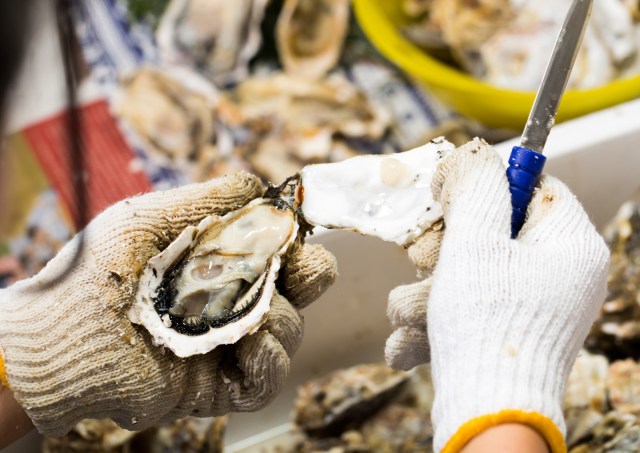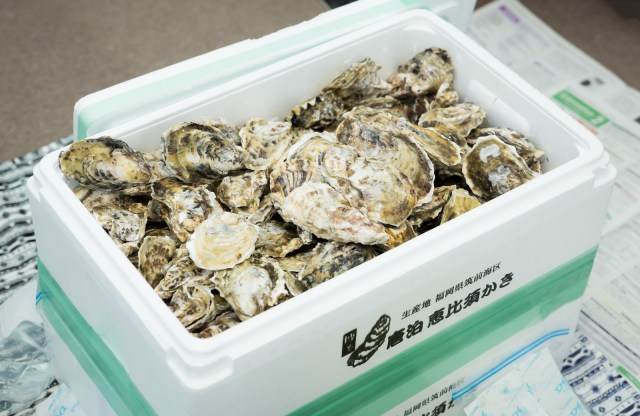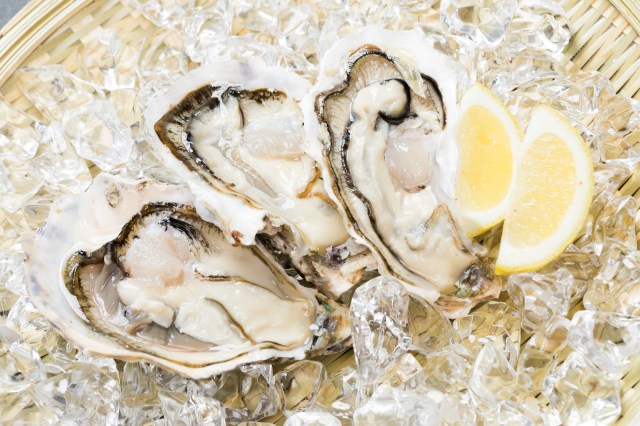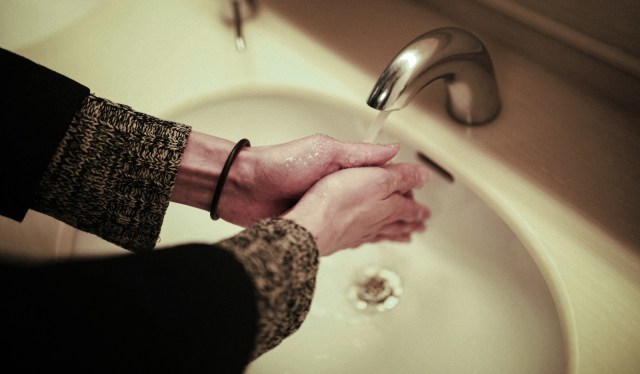
It can go two ways: a fun time or a lot of time in the toilet.
While there are many ways to eat oysters, from grilling to deep frying them, one of the most popular ways is to simply shuck one, drizzle some lemon juice on top, and slurp up the oyster meat straight from the shell.
Except there’s a slight catch. When it comes to eating raw shellfish in general, there is always the risk of contracting food poisoning, and a delicious dinner could very well become a potential nightmare.
However, one Japanese Twitter user has rocked the boat by claiming that one surefire way to avoid food poisoning, and more specifically dangerous bacteria, is to never have the oyster shell touch your mouth, basically implying that slurping oysters from the shell is more dangerous.
▼ Happy hour starters or a gastrointestinal disaster waiting to happen?
While the original tweet which caused the stir has been deleted, its claim has roused a few questions in the heads of many netizens: what is the safest way to eat an oyster? Do you have a higher chance of contracting food poisoning or a digestive system-wrecking disease if you slurp oyster meat from the shell?
Luckily, the tweet has generated such a large discussion that officials from Japan’s Ministry of Health came through with the answers.
▼ But let’s be real: it’s never a good idea to get food safety advice from an anonymous Internet stranger.
The short answer? It doesn’t matter. Whether you’re a slurper or you prefer separating the oyster meat from the shell with an utensil, neither way makes a difference in decreasing your chances of getting food poisoning or coming in contact with harmful bacteria.
The reason is because what causes food poisoning isn’t bacteria but actually a virus — the norovirus to be specific. And how humans come in contact with norovirus isn’t through the carapace of a shellfish but actually through its meat.
▼ Eat me if you dare!
The way norovirus appears in oyster meat is no sudden or random occurrence. Noroviruses travel into marine environments through sewage leaks, essentially through unprocessed feces or vomit. Oysters, being bivalve mollusks that feed by filtering water through their insides, end up accumulating norovirus particles if they are situated near an area with poor sewage treatment and/or control.
Basically, your chances of contracting food poisoning are actually more dependent on the amount of norovirus particles in the inner intestine of an oyster. The Ministry of Health also stressed that proper hygiene practices, such as handling raw oysters in sanitary conditions and washing your hands, also play an important role in ensuring safe consumption of the beloved shellfish.
▼ Twenty seconds with warm, soapy water is the best practice!
At the end of the day, there’s really no way to avoid the risk of food poisoning when eating raw oysters, or raw shellfish in general. So if you really want to treat yourself to some tasty seafood but have something important to do the next day, sometimes it doesn’t hurt to take the more fiery route and cook your oysters on high heat.
Or in the case of hot summery days, eat your fried oysters as ice cream instead.
Source: Yahoo! Japan via Hachima Kiko
Top image: Pakutaso
Images: Pakutaso (1, 2, 3, 4)
● Want to hear about SoraNews24’s latest articles as soon as they’re published? Follow us on Facebook and Twitter!




 Oysters’ amazing cleaning skills shock Japanese netizens who question their shellfish habit
Oysters’ amazing cleaning skills shock Japanese netizens who question their shellfish habit We buy oysters from a Japanese vending machine
We buy oysters from a Japanese vending machine Tokyo restaurant’s amazing all-you-can-eat oyster deal works out to less than three bucks an hour
Tokyo restaurant’s amazing all-you-can-eat oyster deal works out to less than three bucks an hour Love oysters? You can now wear them in style — as a shoulder bag!
Love oysters? You can now wear them in style — as a shoulder bag! Fried Oyster Ice Cream: the taste of the sea in a Japanese soft serve dessert【Taste Test】
Fried Oyster Ice Cream: the taste of the sea in a Japanese soft serve dessert【Taste Test】 Foreigner’s request for help in Tokyo makes us sad for the state of society
Foreigner’s request for help in Tokyo makes us sad for the state of society Japanese city loses residents’ personal data, which was on paper being transported on a windy day
Japanese city loses residents’ personal data, which was on paper being transported on a windy day Historical figures get manga makeovers from artists of Spy x Family, My Hero Academia and more
Historical figures get manga makeovers from artists of Spy x Family, My Hero Academia and more Akihabara pop-up shop sells goods made by Japanese prison inmates
Akihabara pop-up shop sells goods made by Japanese prison inmates Mt. Koya planning to instate visitor’s tax to cope with huge tourist numbers
Mt. Koya planning to instate visitor’s tax to cope with huge tourist numbers Ghibli Park now selling “Grilled Frogs” from food cart in Valley of Witches
Ghibli Park now selling “Grilled Frogs” from food cart in Valley of Witches Red light district sushi restaurant in Tokyo shows us just how wrong we were about it
Red light district sushi restaurant in Tokyo shows us just how wrong we were about it Sandwiches fit for a sumo served up in Osaka【Taste Test】
Sandwiches fit for a sumo served up in Osaka【Taste Test】 Osaka governor suggests lowering voting age to 0 to curb population decline
Osaka governor suggests lowering voting age to 0 to curb population decline Harajuku Station’s beautiful old wooden building is set to return, with a new complex around it
Harajuku Station’s beautiful old wooden building is set to return, with a new complex around it McDonald’s new Happy Meals offer up cute and practical Sanrio lifestyle goods
McDonald’s new Happy Meals offer up cute and practical Sanrio lifestyle goods Japanese ramen restaurants under pressure from new yen banknotes
Japanese ramen restaurants under pressure from new yen banknotes French Fries Bread in Tokyo’s Shibuya becomes a hit on social media
French Fries Bread in Tokyo’s Shibuya becomes a hit on social media Studio Ghibli releases new action figures featuring Nausicaä of the Valley of the Wind characters
Studio Ghibli releases new action figures featuring Nausicaä of the Valley of the Wind characters New private rooms on Tokaido Shinkansen change the way we travel from Tokyo to Kyoto
New private rooms on Tokaido Shinkansen change the way we travel from Tokyo to Kyoto Tokyo Tsukiji fish market site to be redeveloped with 50,000-seat stadium, hotel, shopping center
Tokyo Tsukiji fish market site to be redeveloped with 50,000-seat stadium, hotel, shopping center All-you-can-drink Starbucks and amazing views part of Tokyo’s new 170 meter-high sky lounge
All-you-can-drink Starbucks and amazing views part of Tokyo’s new 170 meter-high sky lounge Beautiful Ghibli sealing wax kits let you create accessories and elegant letter decorations【Pics】
Beautiful Ghibli sealing wax kits let you create accessories and elegant letter decorations【Pics】 Studio Ghibli releases Kiki’s Delivery Service chocolate cake pouches in Japan
Studio Ghibli releases Kiki’s Delivery Service chocolate cake pouches in Japan New definition of “Japanese whiskey” goes into effect to prevent fakes from fooling overseas buyers
New definition of “Japanese whiskey” goes into effect to prevent fakes from fooling overseas buyers Our Japanese reporter visits Costco in the U.S., finds super American and very Japanese things
Our Japanese reporter visits Costco in the U.S., finds super American and very Japanese things Studio Ghibli unveils Mother’s Day gift set that captures the love in My Neighbour Totoro
Studio Ghibli unveils Mother’s Day gift set that captures the love in My Neighbour Totoro More foreign tourists than ever before in history visited Japan last month
More foreign tourists than ever before in history visited Japan last month New Pokémon cakes let you eat your way through Pikachu and all the Eevee evolutions
New Pokémon cakes let you eat your way through Pikachu and all the Eevee evolutions Sales of Japan’s most convenient train ticket/shopping payment cards suspended indefinitely
Sales of Japan’s most convenient train ticket/shopping payment cards suspended indefinitely Sold-out Studio Ghibli desktop humidifiers are back so Totoro can help you through the dry season
Sold-out Studio Ghibli desktop humidifiers are back so Totoro can help you through the dry season Japanese government to make first change to romanization spelling rules since the 1950s
Japanese government to make first change to romanization spelling rules since the 1950s Ghibli founders Toshio Suzuki and Hayao Miyazaki contribute to Japanese whisky Totoro label design
Ghibli founders Toshio Suzuki and Hayao Miyazaki contribute to Japanese whisky Totoro label design Doraemon found buried at sea as scene from 1993 anime becomes real life【Photos】
Doraemon found buried at sea as scene from 1993 anime becomes real life【Photos】 Tokyo’s most famous Starbucks is closed
Tokyo’s most famous Starbucks is closed One Piece characters’ nationalities revealed, but fans have mixed opinions
One Piece characters’ nationalities revealed, but fans have mixed opinions We asked a Uniqlo employee what four things we should buy and their suggestions didn’t disappoint
We asked a Uniqlo employee what four things we should buy and their suggestions didn’t disappoint Princesses, fruits, and blacksmiths: Study reveals the 30 most unusual family names in Japan
Princesses, fruits, and blacksmiths: Study reveals the 30 most unusual family names in Japan The world’s biggest Muji store opened in Hiroshima, and we went to check it out!
The world’s biggest Muji store opened in Hiroshima, and we went to check it out! Aichi supermarket caught selling poisonous puffer fish livers, “been selling it for decades”
Aichi supermarket caught selling poisonous puffer fish livers, “been selling it for decades” Top 10 food disasters prepared by Japanese wives who have extraordinary talent in the kitchen
Top 10 food disasters prepared by Japanese wives who have extraordinary talent in the kitchen Can you guess what type of seafood pugs look like?
Can you guess what type of seafood pugs look like? Learn Japanese through ridiculous manga: Narutoe 【Episode #2】
Learn Japanese through ridiculous manga: Narutoe 【Episode #2】 What’s the best way to eat Japanese cream stew and rice, “together” or “separate?”【Survey】
What’s the best way to eat Japanese cream stew and rice, “together” or “separate?”【Survey】 A friendly reminder not to accidentally get squid sperm in your mouth, it hurts
A friendly reminder not to accidentally get squid sperm in your mouth, it hurts Regular cup noodle bowls not enough for you? Try this 2000+ calorie instant yakisoba instead!
Regular cup noodle bowls not enough for you? Try this 2000+ calorie instant yakisoba instead! We eat a luxurious Japanese-style buffet breakfast in a restaurant full of wood-carved bears
We eat a luxurious Japanese-style buffet breakfast in a restaurant full of wood-carved bears We bought 21 packs of roasted shellfish to try to find a pearl – but did we get lucky?
We bought 21 packs of roasted shellfish to try to find a pearl – but did we get lucky? Japanese survey reveals over 60 percent of blind people with guide dogs get turned away by shops
Japanese survey reveals over 60 percent of blind people with guide dogs get turned away by shops Lotteria’s Tsukimi Rib Sandwich joins the fight for Japanese tsukimi supremacy【Taste test】
Lotteria’s Tsukimi Rib Sandwich joins the fight for Japanese tsukimi supremacy【Taste test】 Bizarre or brilliant? Takoyaki and okonomiyaki rice balls available in convenience stores now
Bizarre or brilliant? Takoyaki and okonomiyaki rice balls available in convenience stores now Failed your important entrance exams? That’s too bad–here’s a steak to make you feel better
Failed your important entrance exams? That’s too bad–here’s a steak to make you feel better This rare autumn vegetable is the perfect addition to your stir-fry or salad【SoraKitchen】
This rare autumn vegetable is the perfect addition to your stir-fry or salad【SoraKitchen】
Leave a Reply